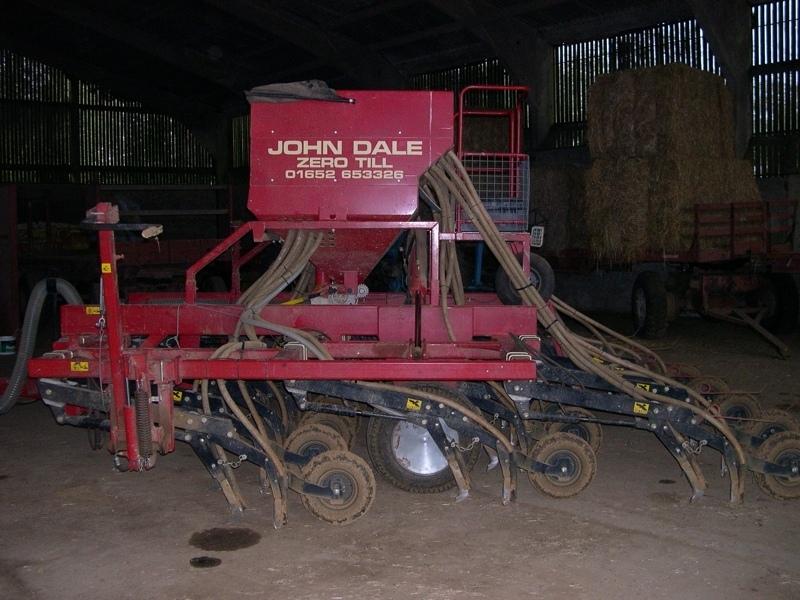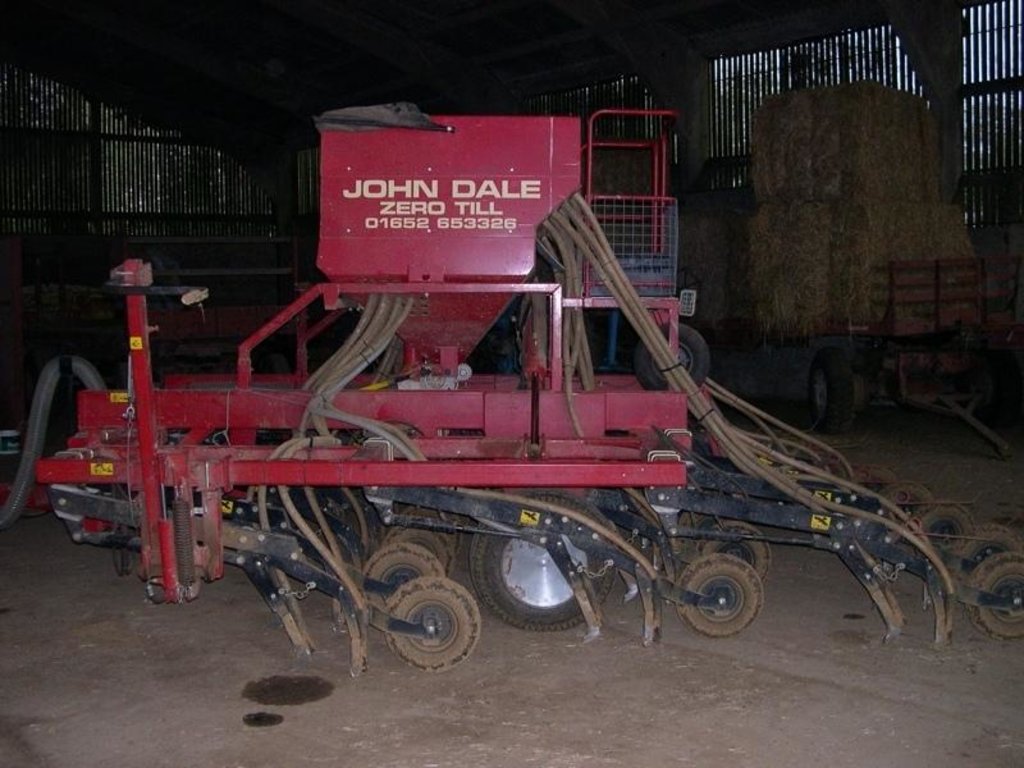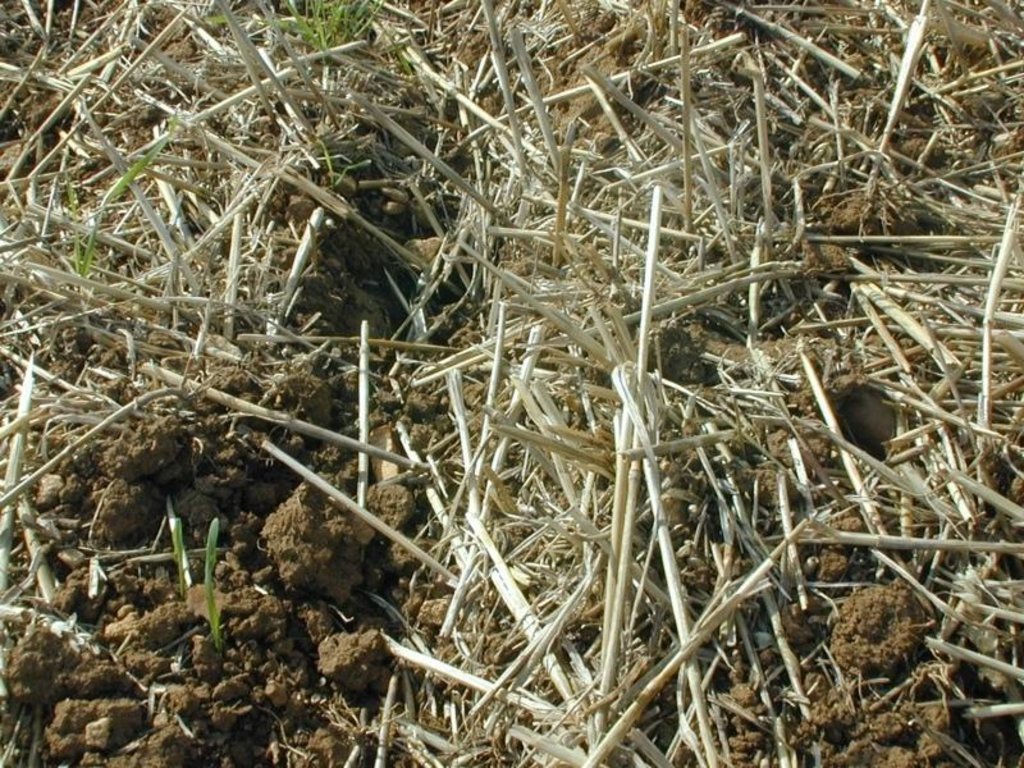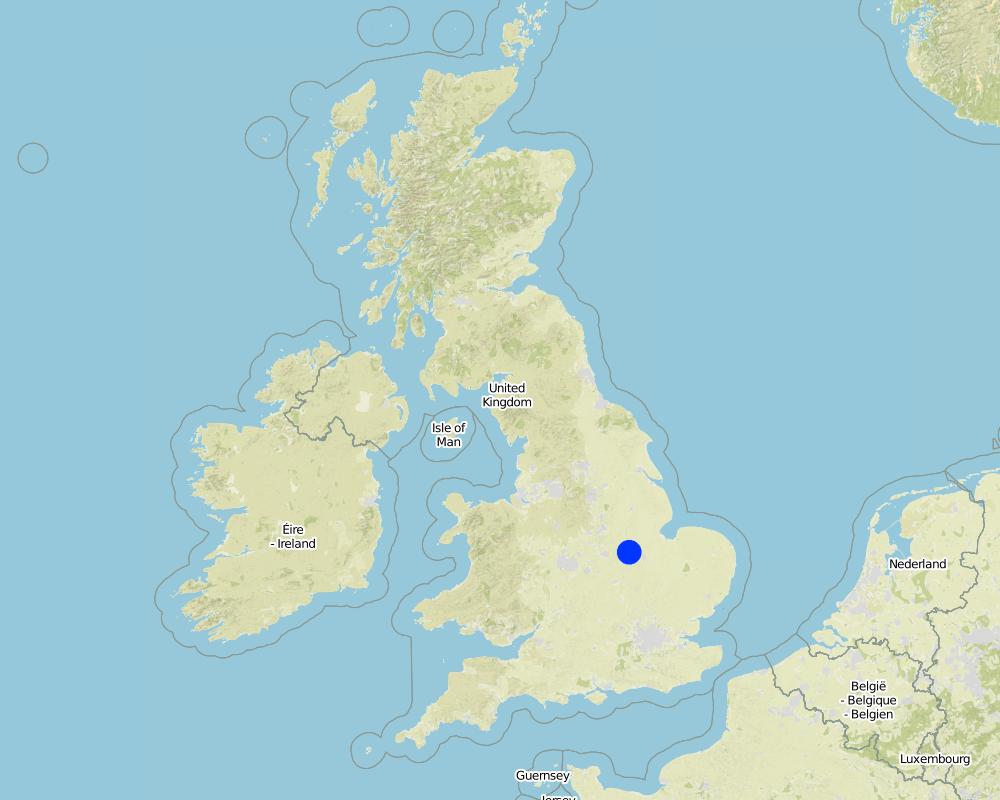Direct drilling for UK arable cropping systems: Normanton [United Kingdom]
- Creation:
- Update:
- Compiler: Ceris A. Jones
- Editor: –
- Reviewer: Deborah Niggli
no-tillage (eng); zero-tillage (eng); non-inversion (eng)
technologies_982 - United Kingdom
View sections
Expand all Collapse all1. General information
1.2 Contact details of resource persons and institutions involved in the assessment and documentation of the Technology
Name of project which facilitated the documentation/ evaluation of the Technology (if relevant)
Soil and water protection (EU-SOWAP)1.3 Conditions regarding the use of data documented through WOCAT
When were the data compiled (in the field)?
24/02/2005
The compiler and key resource person(s) accept the conditions regarding the use of data documented through WOCAT:
Ja
1.4 Declaration on sustainability of the described Technology
Is the Technology described here problematic with regard to land degradation, so that it cannot be declared a sustainable land management technology?
Nee
1.5 Reference to Questionnaire(s) on SLM Approaches
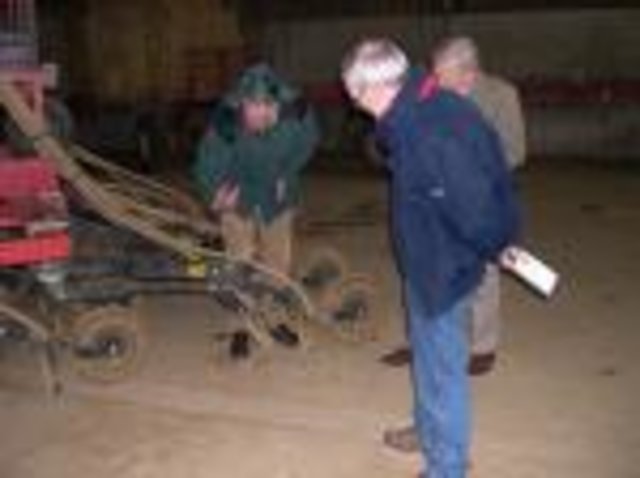
Individual experimental farmer: Normanton [United Kingdom]
Individual farmer seeking information and experimenting with machinery to maintain economic viability
- Compiler: Ceris A. Jones
2. Description of the SLM Technology
2.1 Short description of the Technology
Definition of the Technology:
Crop establishment with minimal soil disturbance
2.2 Detailed description of the Technology
Description:
Direct drilling replacing the plough. Residue from previous crop retained and new crop planted with minimal soil disturbance.
Purpose of the Technology: cost and labour reduction.
Establishment / maintenance activities and inputs: good residue managament without burning; appropriate equipment for soil type.
Natural / human environment: weather, soil, farmer attitude
2.3 Photos of the Technology
2.5 Country/ region/ locations where the Technology has been applied and which are covered by this assessment
Country:
United Kingdom
Region/ State/ Province:
Rutland
Further specification of location:
Oakham
Map
×2.6 Date of implementation
If precise year is not known, indicate approximate date:
- less than 10 years ago (recently)
2.7 Introduction of the Technology
Specify how the Technology was introduced:
- during experiments/ research
Comments (type of project, etc.):
Canada + UK
3. Classification of the SLM Technology
3.1 Main purpose(s) of the Technology
- reduce, prevent, restore land degradation
3.2 Current land use type(s) where the Technology is applied

Cropland
- Annual cropping
Main crops (cash and food crops):
Major cash crop: Sugar beet
Other crops: Wheat, oilseed rape
Comments:
Major land use problems (land users’ perception): Lack of organic matter which is making soils more difficult to work
Type of cropping system and major crops comments: Wheat - oilseed rape -wheat - sugar beet. However the rotation is flexible. It should be noted that only the combinable crops (wheat and oilseed rape) are direct drilled
3.3 Further information about land use
Water supply for the land on which the Technology is applied:
- rainfed
Number of growing seasons per year:
- 1
Specify:
Longest growing period in days: 330, Longest growing period from month to month: Sept - Jul
3.4 SLM group to which the Technology belongs
- minimal soil disturbance
3.5 Spread of the Technology
Comments:
Total area covered by the SLM Technology is 0.245 m2.
Single farm of 316ha
3.6 SLM measures comprising the Technology
3.7 Main types of land degradation addressed by the Technology

soil erosion by water
- Wt: loss of topsoil/ surface erosion

chemical soil deterioration
- Cn: fertility decline and reduced organic matter content (not caused by erosion)

physical soil deterioration
- Pc: compaction
Comments:
Main causes of degradation: poverty / wealth (economic viability), labour availability (loss of labour)
3.8 Prevention, reduction, or restoration of land degradation
Specify the goal of the Technology with regard to land degradation:
- reduce land degradation
4. Technical specifications, implementation activities, inputs, and costs
4.2 Technical specifications/ explanations of technical drawing
Technical knowledge required for field staff / advisors: high
Technical knowledge required for land users: high
Main technical functions: control of raindrop splash
Secondary technical functions: control of dispersed runoff: impede / retard, improvement of ground cover, increase of surface roughness, increase in organic matter, improvement of soil structure, increase in soil fertility
Manure / compost / residues
Material/ species: crop residue
Quantity/ density: 4 t/ha
Remarks: chopped and spread evenly
4.3 General information regarding the calculation of inputs and costs
other/ national currency (specify):
£
Indicate exchange rate from USD to local currency (if relevant): 1 USD =:
0.56
4.6 Maintenance/ recurrent activities
| Activity | Type of measure | Timing/ frequency | |
|---|---|---|---|
| 1. | Spray with glyphosate | Agronomic | after harvest and ~1 week before drilling / annual |
| 2. | Drilling | Agronomic | 6-8weeks after harvest / annual |
| 3. | Harrow (up to 2.5cm deep) | Agronomic | immediately after drilling / annual |
| 4. | Roll | Agronomic | immediately after harrowing / annual |
4.7 Costs and inputs needed for maintenance/ recurrent activities (per year)
| Specify input | Unit | Quantity | Costs per Unit | Total costs per input | % of costs borne by land users | |
|---|---|---|---|---|---|---|
| Equipment | Machine use | ha | 1.0 | 73.0 | 73.0 | 100.0 |
| Total costs for maintenance of the Technology | 73.0 | |||||
Comments:
Machinery/ tools: John Dale direct drill, roller, harrow
This amount is for crop establishment costs only and may vary depending on crop type, state of the soil and climate. The cost includes machinery + labour. In comparison, the crop establishment costs for a conventionally mouldboard ploughed system is $239.
4.8 Most important factors affecting the costs
Describe the most determinate factors affecting the costs:
soil moisture
5. Natural and human environment
5.1 Climate
Annual rainfall
- < 250 mm
- 251-500 mm
- 501-750 mm
- 751-1,000 mm
- 1,001-1,500 mm
- 1,501-2,000 mm
- 2,001-3,000 mm
- 3,001-4,000 mm
- > 4,000 mm
Agro-climatic zone
- sub-humid
5.2 Topography
Slopes on average:
- flat (0-2%)
- gentle (3-5%)
- moderate (6-10%)
- rolling (11-15%)
- hilly (16-30%)
- steep (31-60%)
- very steep (>60%)
Landforms:
- plateau/plains
- ridges
- mountain slopes
- hill slopes
- footslopes
- valley floors
Altitudinal zone:
- 0-100 m a.s.l.
- 101-500 m a.s.l.
- 501-1,000 m a.s.l.
- 1,001-1,500 m a.s.l.
- 1,501-2,000 m a.s.l.
- 2,001-2,500 m a.s.l.
- 2,501-3,000 m a.s.l.
- 3,001-4,000 m a.s.l.
- > 4,000 m a.s.l.
5.3 Soils
Soil depth on average:
- very shallow (0-20 cm)
- shallow (21-50 cm)
- moderately deep (51-80 cm)
- deep (81-120 cm)
- very deep (> 120 cm)
Soil texture (topsoil):
- coarse/ light (sandy)
- medium (loamy, silty)
Topsoil organic matter:
- medium (1-3%)
If available, attach full soil description or specify the available information, e.g. soil type, soil PH/ acidity, Cation Exchange Capacity, nitrogen, salinity etc.
Soil fertility is medium
Soil drainage/infiltrations is good. Also medium (ranked 2) and poor (ranked 3)
Soil water storage capacity is high
5.6 Characteristics of land users applying the Technology
Market orientation of production system:
- commercial/ market
Off-farm income:
- > 50% of all income
Relative level of wealth:
- average
Level of mechanization:
- mechanized/ motorized
Indicate other relevant characteristics of the land users:
Population density: < 10 persons/km2
Annual population growth: negative
25% of the land users are rich.
50% of the land users are average wealthy.
25% of the land users are poor.
Off-farm income specification: Recent diversification to a great extent than neighbours
5.7 Average area of land owned or leased by land users applying the Technology
- < 0.5 ha
- 0.5-1 ha
- 1-2 ha
- 2-5 ha
- 5-15 ha
- 15-50 ha
- 50-100 ha
- 100-500 ha
- 500-1,000 ha
- 1,000-10,000 ha
- > 10,000 ha
Comments:
316ha farm
5.8 Land ownership, land use rights, and water use rights
Land ownership:
- individual, not titled
Land use rights:
- leased
6. Impacts and concluding statements
6.1 On-site impacts the Technology has shown
Socio-economic impacts
Production
crop production
Income and costs
farm income
workload
Comments/ specify:
Only when it's wet in the autumn
Other socio-economic impacts
Preparation for new legislation
Socio-cultural impacts
conflict mitigation
Improved livelihoods and human well-being
Comments/ specify:
Improved quality of life and employment since their is more time
Acceptance by society
Comments/ specify:
Regarded with suspicion by neighbours, 'untidy' fields
Ecological impacts
Water cycle/ runoff
excess water drainage
Comments/ specify:
Variable, lack of infiltration at surface
Soil
soil moisture
Comments/ specify:
Positive in dry conditions, can be excessive in wet conditions
soil cover
Comments/ specify:
Crop residue. However wet residue can impede crop germination
soil loss
Biodiversity: vegetation, animals
animal diversity
Comments/ specify:
Increasing bird populations
Other ecological impacts
Grass weed management time
6.2 Off-site impacts the Technology has shown
downstream siltation
6.4 Cost-benefit analysis
How do the benefits compare with the establishment costs (from land users’ perspective)?
Short-term returns:
positive
Long-term returns:
very positive
How do the benefits compare with the maintenance/ recurrent costs (from land users' perspective)?
Short-term returns:
very positive
Long-term returns:
very positive
6.5 Adoption of the Technology
Comments:
100% of land user families have adopted the Technology without any external material support
1 land user families have adopted the Technology without any external material support
There is a little trend towards spontaneous adoption of the Technology
Comments on adoption trend: Direct drilling is still regarded with some suspicion in fthe UK, partly due to wet conditions, grass weed problems and machniery. However, economic pressures and changes to legislation may increase the trend
6.7 Strengths/ advantages/ opportunities of the Technology
| Strengths/ advantages/ opportunities in the land user’s view |
|---|
| reduced work load |
| improvements to soil condition and the environment |
| improved trafficability (on the land) |
| Strengths/ advantages/ opportunities in the compiler’s or other key resource person’s view |
|---|
| improved soil cover and fertility |
| improved biodiversity above and below ground |
| reduced work load |
| good fit in current (and future) policy environment |
| farmers become better managers of their entire farming system |
6.8 Weaknesses/ disadvantages/ risks of the Technology and ways of overcoming them
| Weaknesses/ disadvantages/ risks in the land user’s view | How can they be overcome? |
|---|---|
| occurrence of rain after drilling (more susceptible to wet conditions at this time compared to ploughing) | ability to loosen the soil if required |
| higher management imput | better advice |
| higher cost of sprays | better rotations and other cutural methods of managing weeds |
| untidy fields | research, demonstration and advice |
| lack of knowledge and experience | research, demonstration and advice |
| Weaknesses/ disadvantages/ risks in the compiler’s or other key resource person’s view | How can they be overcome? |
|---|---|
| weed management | better rotations, better fertiliser placement, better targetting of susceptible stages in weed lifecycle |
| lack of information | more on-farm research + demonstration for now and the future especially to develop economically viable rotations, more applicable herbicide labelling |
| farmers conservatism | more demonstrations |
| susceptibility to wet autumns (coping with wet residue) | more reliable weather forecasts |
| weather dependent |
7. References and links
7.1 Methods/ sources of information
- field visits, field surveys
- interviews with land users
7.3 Links to relevant information which is available online
Title/ description:
Controlled traffic farming project
URL:
www.controlledtrafficfarming.com
Title/ description:
John Dale drills
URL:
www.daledrills.com
Title/ description:
SOWAP project
URL:
www.sowap.org
Links and modules
Expand all Collapse allLinks

Individual experimental farmer: Normanton [United Kingdom]
Individual farmer seeking information and experimenting with machinery to maintain economic viability
- Compiler: Ceris A. Jones
Modules
No modules


